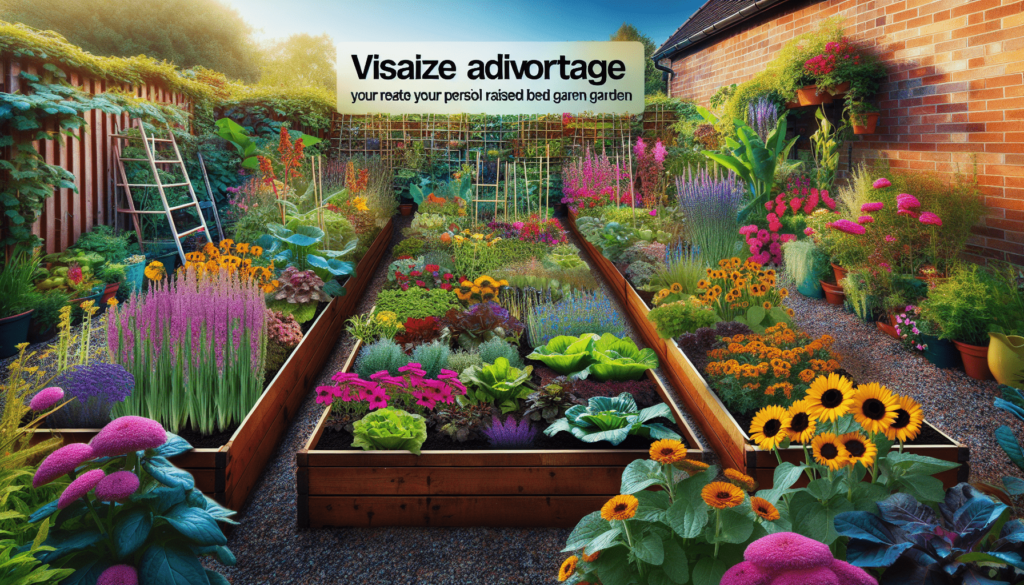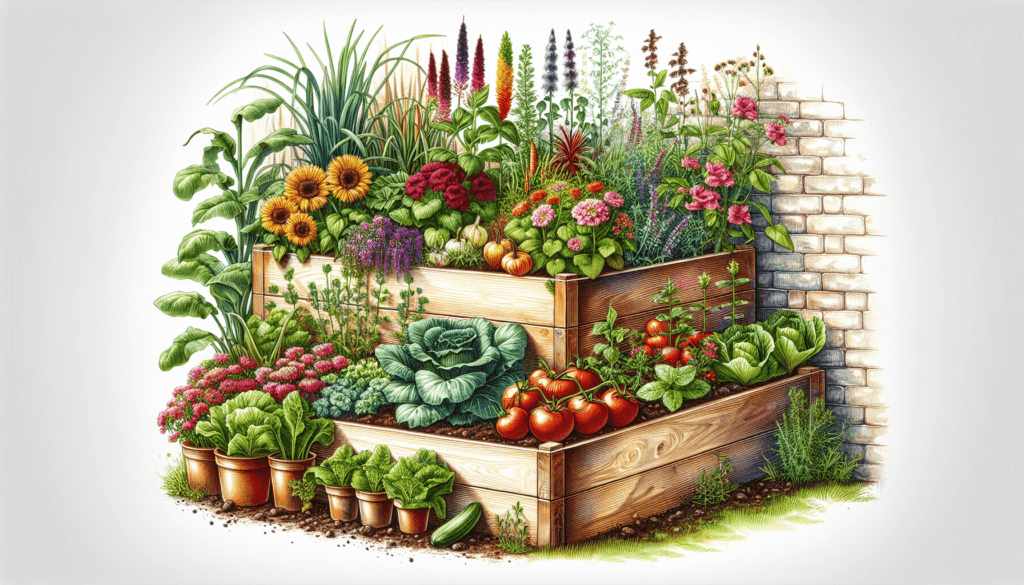Have you ever considered building raised garden beds in your yard? Whether you’re a seasoned gardener or a beginner, raised beds offer a multitude of benefits. In this ultimate guide, we’ll cover everything you need to know about building and maintaining raised beds so you can enjoy a flourishing garden all season long.

Benefits of Raised Beds
Raised garden beds offer numerous advantages for gardeners of all levels. From better soil quality to improved drainage, these beds can help you create a thriving garden with ease.
Improved Soil Quality
By building raised beds, you have more control over the soil composition. You can customize the soil mix to meet the needs of your plants, resulting in healthier growth and better yields.
Better Drainage
Raised beds allow excess water to drain more efficiently than traditional garden beds. This prevents waterlogging and root rot, keeping your plants healthy and thriving.
Weed Control
Raised beds can be filled with weed-free soil, minimizing the chances of weed growth. Their elevated design also makes it easier to spot and remove any weeds that do manage to sprout.
Extended Growing Season
Due to the improved drainage and soil warmth, raised beds can extend the growing season. This means you can start planting earlier in the spring and continue harvesting later into the fall.
Choosing a Location
Selecting the right location for your raised beds is crucial to the success of your garden. Consider factors such as sunlight, access to water, and proximity to your home.
Sunlight
Most vegetables and flowers require at least six hours of sunlight per day. Choose a location for your raised beds that receives adequate sunlight to ensure the optimal growth of your plants.
Water Access
Raised beds need regular watering, especially during hot summer months. It’s essential to place them within reach of a water source to make watering more manageable.
Proximity to Your Home
Consider placing your raised beds close to your home for easy access. This proximity makes it convenient to tend to your garden, harvest produce, and monitor plant health.
Building Your Raised Beds
Once you’ve selected the location for your raised beds, it’s time to start building. From materials to dimensions, there are several factors to consider when constructing your beds.
Materials
When building raised beds, you have a variety of materials to choose from. Wood, concrete blocks, and composite lumber are popular options. Choose a material that suits the aesthetics of your garden and fits within your budget.
Dimensions
The size of your raised beds will depend on the available space and your gardening goals. Consider the reach of your arms, ensuring you can tend to your plants without straining. A width of 3 to 4 feet is ideal for easy access from both sides of the bed.
Height
Raised beds can range in height from 6 inches to 3 feet or more. Taller beds are easier to work in, especially for those with mobility issues. However, keep in mind that taller beds require more soil to fill.
Filling Your Raised Beds
The soil you use in your raised beds plays a significant role in the success of your garden. Make sure to choose a quality mix that provides proper drainage and nutrients for your plants.
Soil Mix
A typical soil mix for raised beds consists of equal parts of topsoil, compost, and peat moss or coconut coir. This blend provides a balance of nutrients, water retention, and aeration for optimal plant growth.
Soil Testing
Before filling your raised beds, it’s a good idea to have your soil tested for pH levels and nutrient content. You can send a sample to a local extension office or use a home testing kit to determine the soil’s composition.
Amending Soil
Based on the results of your soil test, you may need to amend the soil in your raised beds. Add lime to raise pH levels or sulfur to lower them. Incorporate organic matter such as compost to improve soil structure and fertility.

Planting in Raised Beds
Now that your raised beds are built and filled with soil, it’s time to start planting. Consider factors like plant spacing, crop rotation, and companion planting to maximize your garden’s potential.
Plant Spacing
Proper plant spacing is essential for optimal growth and yield. Check the seed packet or plant label for spacing recommendations and adjust accordingly to prevent overcrowding.
Crop Rotation
Rotate your crops each year to prevent nutrient depletion and soil-borne diseases. Divide your raised beds into sections and plant different families of crops in each section each season.
Companion Planting
Use companion planting techniques to enhance plant health and deter pests. Planting compatible crops together can improve soil fertility, repel harmful insects, and attract beneficial pollinators.
Watering Your Raised Beds
Maintaining proper moisture levels in your raised beds is essential for plant health. Follow these tips to ensure your plants receive adequate water without overwatering.
Watering Methods
There are several ways to water your raised beds, including hand watering, drip irrigation, and soaker hoses. Choose a method that works best for your garden layout and watering schedule.
Watering Schedule
Establish a watering schedule based on your plants’ water needs and weather conditions. Water early in the morning to minimize evaporation and fungal diseases, and avoid watering late in the evening.
Mulching
Mulching your raised beds helps retain soil moisture, reduce weed growth, and regulate soil temperature. Use organic mulches like straw, bark chips, or shredded leaves to cover the soil surface.
Maintaining Your Raised Beds
Regular maintenance is key to the long-term success of your raised beds. Follow these maintenance tips to keep your garden healthy and productive throughout the growing season.
Weeding
Regularly check your raised beds for weeds and remove them promptly to prevent competition for nutrients and water. Use a hand tool or simply pull out weeds by hand.
Fertilizing
Supplement the nutrients in your soil by fertilizing your raised beds regularly. Use organic fertilizers like compost, aged manure, or fish emulsion to provide a steady supply of nutrients to your plants.
Pest Management
Monitor your plants for signs of pests and take action promptly to prevent damage. Use natural pest control methods like handpicking, insecticidal soaps, or neem oil to manage common garden pests.
Harvesting from Your Raised Beds
As your plants mature, it’s time to enjoy the fruits of your labor by harvesting fresh produce from your raised beds. Follow these tips to maximize your harvest and prolong the growing season.
Harvesting Tips
Harvest your crops at the peak of ripeness for the best flavor and nutritional value. Use clean, sharp tools to avoid damaging plants and handle produce carefully to prevent bruising.
Succession Planting
Once you’ve harvested one crop, replant the space with a quick-growing or cold-hardy crop to extend your harvest season. Succession planting ensures a steady supply of fresh produce throughout the year.
Winterizing
Prepare your raised beds for winter by cleaning up plant debris, adding a layer of mulch, and covering sensitive crops with row covers or cold frames. Winterizing your beds protects the soil and prepares it for spring planting.
Conclusion
Building and maintaining raised beds can transform your garden into a productive and beautiful space. By following the tips outlined in this ultimate guide, you can create a thriving garden that yields bountiful harvests year after year. Whether you’re a beginner or an experienced gardener, raised beds offer a simple and effective way to grow healthy plants and enjoy the benefits of gardening. Start planning and building your raised beds today to reap the rewards of a flourishing garden in no time.

